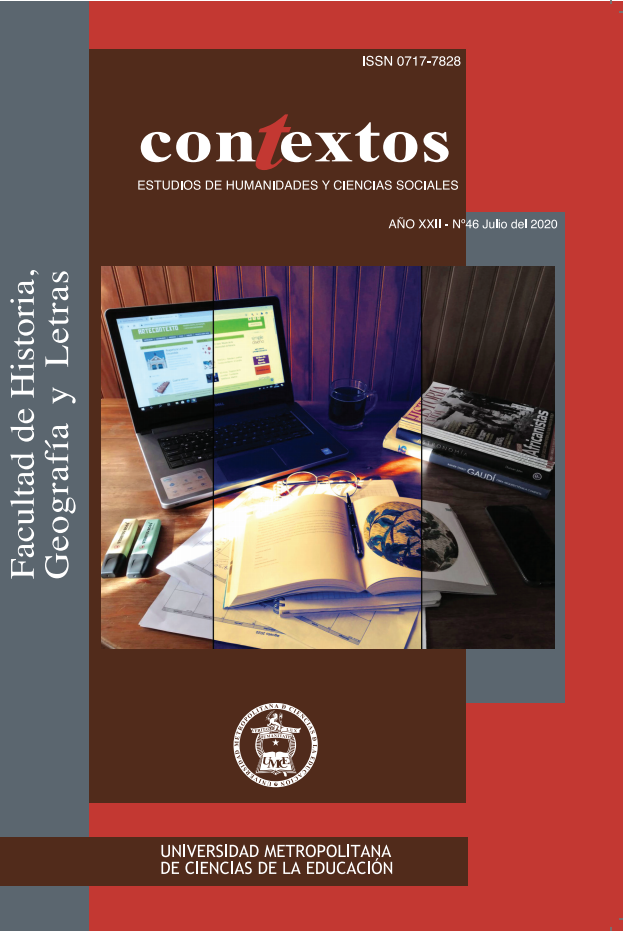Main Article Content
Jul 29, 2020
Abstract
Recent research suggests that meaningful learning is more likely to occur when real life situations are brought into the classroom and students are to use their previous knowledge to deal with such situations. Following this, an important element to consider is the specific context where we want this process to occur, so that the real life situations may actually be relatable to the classroom environment. The Chilean context offers a variety of settings where room for intervention can occur through an active role by the pre-service teachers. The contextual dimension was essential for deciding on the use of Task-Based Language Teaching, as the approach promotes the use of activities that are perceived as appropriate for the specificities of the learners. Although important, developing the four language skills was not the main purpose, but to account for the relationship that there may be between the application of TBLT and the classroom atmosphere. The present study followed a qualitative approach for data collection and analysis, its design was non-experimental and cross sectional and the sample comprised 24 Chilean schools.
Downloads
Policies for open access journals
Authors who publish here accept the following terms: Authors will keep their copyright and will guarantee the journal the right to the first publication of their work, which will be subject to the Licence of Creative Commons acknowledgement, which allows for the use of this material only if the authorship is credited and the original source is acknowledged (the journal’s URL), and if it is not used with commercial ends and with any derivations of the original work.
Authors may adopt other non-exclusive license agreements of distribution of the published version (e.g. to save it onto a digital institutional archive or publish it in a monographic volume) only if the initial publication of this journal is indicated.
It is permitted and recommended for authors to divulge their work on the Internet (e.g. institutional digital archives or webpage) before and during the submission process, which may lead to interesting exchanges and increase the citations of the publication. (See Open Access Effect).
References
Ambrose, S., Bridges, M., DiPietro, M., Lovett, M., & Norman, M.2010. How learning works: seven research-based principles for smart teaching(1stEd.). United States of America: Jossey-Bass.
Casassus, J.2014.La educación del ser emocional. Santiago de Chile: Índigo / Cuarto Propio.
Dörnyei, Z.2010. The relationship between language aptitude and language learning motivation: Individual differences from a dynamic systems perspective. In E. Macaro (Ed.), Continuum companion to second language acquisition(pp. 247-267). London: Continuum.
Education Quality Agency.2013. Las horas de inglés. Apuntes Sobre la Calidad de la Educación, Año 1, N°5. Available online at: http://archivos.agenciaeducacion.cl/documentos-web/Papers/2013_05_Las_horas_de_ingles.pdf
Emmer, E. & Sabornie, E. 2015. Handbook of classsroom management(2ndEd.). New York: Routledge.
Harfitt, G. 2012. Class size and language learning in Hong Kong: the students’ perspective. Educational Research 54(3): 331-342.
Hsieh, H. & Shannon, S.2005. Three Approaches to Qualitative Content Analysis. Qualitative Health Research 15(9): 1277-1288.
Kao, S. & O'Neill, C.1998.Words into Worlds: Learning a Second Language Through Process Drama. London: Alex Publishing Corporation.
Khazaei, Z., Zadeh, A., & Ketabi, S.2012. Willingness to communicate in Iranian EFL learners: The effect of class size. English Language Teaching 5(11): 181-187.
Krashen, S.1981.Second Language Acquisition and Second Language Learning. Pergamon Press Inc.
Littlewood, W.2007. Communicative and task-based language teaching in East Asian classrooms. Language Teaching 40: 243-249.
Long, M.1985. A role for instruction in second language acquisition. In K. Hyltenstam and M. Pienemann (Eds.), Modelling and Assessing Second Language Acquisition, (pp.77-99). Avon: Multilingual Matters.
Mao, Z.2012. The Application of Task-based Language Teaching to English Reading Classroom. Theory and Practice in Language Studies 2: 2430-2438.
Ministerio de Educación Chile. Marco para la Buena Enseñanza Actualización Marzo 2018.(2018)Recuperado de:https://epja.mineduc.cl/wp-content/uploads/sites/43/2018/10/Marco-para-la-Buena-Ensen%CC%83anza-2018_CPEIP.pdf
Nelsen, J., Lott,L., & Glenn, S.2011 [2000].Positive Discipline in the Classroom. New York: Three Rivers Press.
Nunan, D.2004. Tasked-based Language Teaching. New York. Cambridge University Press.
Nunan, D.2005. Designing tasks for the communicative classroom. Cambridge: Cambridge University Press.
Nunan, D.2013. Learner-centered English Language Education: The Selected Works. New York: Routledge.
Preston, D.1993. The uses of folk linguistics. International Journal of Applied Linguistics 3(2): 181-259.
Richards, J., Platt, J. & Weber, H.1986. Longman Dictionary of Applied Linguistics. London. Harlow, U.K.
Richards, J.2001. Curriculum Development in Language Teaching. Cambridge: Cambridge University Press.
Scrievener, J.2012.Classroom Management. Cambridge University Press.
Serrano, R.2011. The Time Factor in EFL Classroom Practice. Language Learning 61(1): 117-145.
Skehan, P.1998. A Cognitive Approach to Language Learning. Oxford: Oxford University Press.






